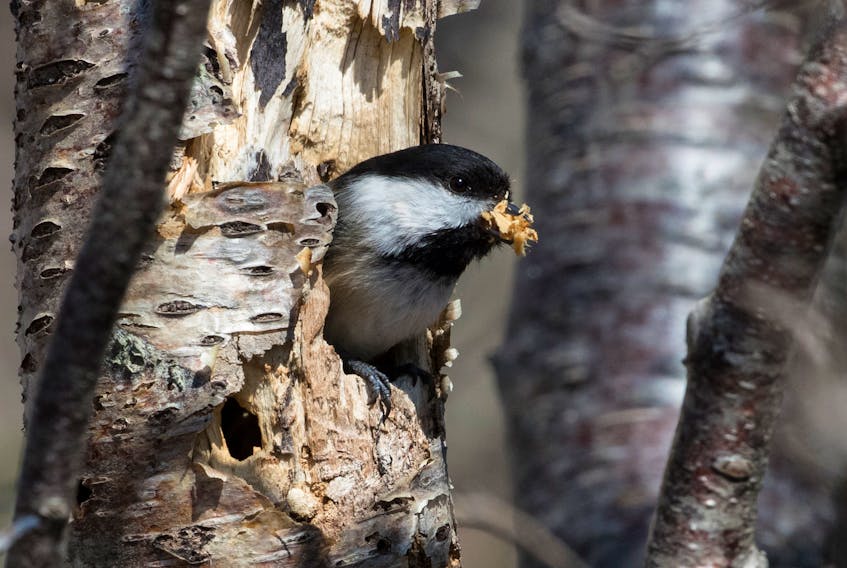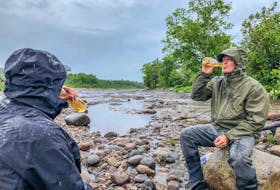The thing about the spring arrival of birds is that they always come even if the waiting seems long. Plenty happens in the two weeks between these bird columns during spring migration.
In the last week some of the big changes have been the arrival of ospreys.
It is uplifting to see the ospreys return to last year’s nest. Presently the osprey pairs are becoming reacquainted and starting in on nest repairs. Or if one of a pair did not return this year a new relationship will be formed.
Satellite tagging of some Avalon Peninsula ospreys several years ago showed that after they finish nesting here they fly south to all the way to Venezuela for the winter. There is so much opportunity for mishap on such a journey.

One of my favourite sounds of spring is the winnowing produced by displaying snipe.
The haunting, quivering hollow sound over head in the sky is heard all over Newfoundland and much of southern Labrador from late April to the end of June. The snipe are back.
Some of the other common staples of summer bird life have made a welcome return.
Savannah sparrow is a common bird of open grassy areas throughout the province. We take them for granted once summer arrives but right now they are beautiful in the eyes of birders eagerly welcoming back every individual sign of spring.
Yellow-rumped warbler is the most common and widespread warbler in the province. They are also highly desired at the start of spring but will soon become, dare I say, mundane to active birders when the rest of the pretty warblers come back during May.
Yes, spring is here. May is the time to really enjoy spring as it opens like a flower revealing so many pretty birds.
The birds do not waste much time after getting back home to start nesting. In the last few days I have noticed the robins in the act of nest building. They are pretty clever about concealing their efforts and intentions. If they think they are being watched they will not carry that beak full of grass to their nest site. The robins want their nest to be a total secret.
However, if you are on to their ways then it is pretty easy to find their nests. I know there is a nest being built next door to my house.
From my back window I see the robins going with grass to a particular area. When they come back out empty billed they often fly up to the same tree to have a look around just to see if anyone has been taking notice of their nest building activity.
They act nonchalant but suspicion is written all over their face!
I enjoyed watching a pair of black-capped chickadees excavation a nest hole in a rotted birch stump. They were not concerned about my presence at all.
Maybe because they were used to people walking on the trail hardly two metres away. The pair took turns entering the hole and bringing up a beak full of wood chips. They would fly off through the woods spreading out the wood chips to conceal any evidence of their nesting building activities to potential predators.
One bird spent just a few seconds in the hole getting a load of debris then flying off. The other bird spent up to a minute in the hole before exiting with its beak full. I suspect it was the female spending more time fashioning the hole just right for the eggs and her.
Male and female black-capped chickadees look identical. The female will spend the most time in the nest hole incubating eggs. The male will stand on guard outside the nest hole hurrying away in potential predators that get too close. Both parents will be busy feeding the young when they hatch after 13 days of incubation. Just one little nest in the woods.
There will be 100s of thousands of bird nests built across Newfoundland and Labrador this month.
Not all species jump into nesting activities as soon as it warms up in the spring. Goldfinches are the obvious example.
The wait until mid-summer to nest so that there will be lots of weed seed available to feed the young.
But that is not stopping the males from turning into bright yellow light bulbs now. Anyone who has them at their feeders will know exactly what I mean.
By the way, people often ask when they should take in their bird feeders. It is up to you. You can stop now. The birds will be fine on their own now that the snow has melted.
If you enjoy watching the birds then keep on feeding them.
Bruce Mactavish is an environmental consultant and avid birdwatcher. He can be reached at [email protected]









